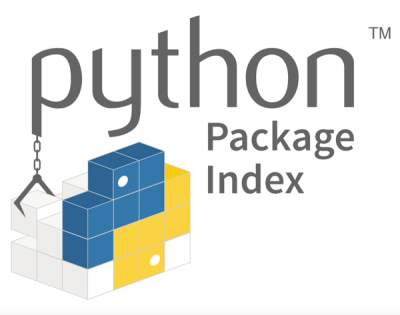xrayutilities

xrayutilities is a collection of scripts used to analyze and simulate x-ray
diffraction data. It consists of a Python package and several routines coded
in C. For analysis the package is especially useful for the reciprocal space
conversion of diffraction data taken with linear and area detectors. For
simulations code for X-ray reflectivity, kinematical and dynamical diffraction
simulation of crystal truncation rods as well as fundamental parameters powder
diffraction is included.
Copyright (C) 2009-2024 Dominik Kriegner dominik.kriegner@gmail.com
Copyright (C) 2009-2013 Eugen Wintersberger eugen.wintersberger@desy.de
Mailing list and issue tracker
To get in touch with us or report an issue please use the mailing list
(https://sourceforge.net/p/xrayutilities/mailman/xrayutilities-users/) or the
Github issue tracker (https://github.com/dkriegner/xrayutilities/issues). When
you want to follow announcements of major changes or new releases its
recommended to sign up for the mailing
list
Contents
- examples: directory with example scripts and configurations
- lib/xrayutilities: directory with the sources for the Python package
- tests: directory with the unittest scripts
- setup.py: setuptools install script used for the package installation
Installation (pip)
Using the python package manager pip you can install xrayutilities by executing
pip install xrayutilities
or for a user installation (without admin access) use
pip install --user xrayutilities
Installation (source)
Installing xrayutilities from source is an easy process done by executing
pip install .
in the source folder of xrayutilities on the command line/terminal. Directly
calling setup.py by
python setup.py install
or
python setup.py install --prefix=<install_path>
is possible but you have to manually ensure that the dependencies are all
installed! The first command installs xrayutilities in the systems default
directories, whereas in the second command you can manually specify the
installation path.
By default the installation procedure tries to enable OpenMP support
(recommended). It is disabled silently if OpenMP is not available. It can also
be disabled by using the --without-openmp option for the installation:
python setup.py build_ext --without-openmp install
Requirements
The following requirements are needed for installing and using xrayutilities:
- Python (>= 3.6)
- h5py
- scipy (version >= 0.18.0)
- numpy (version >= 1.9, >2.0 since xrayutilities-1.7.8)
- lmfit (>= 1.0.1)
- matplotlib (optional, version >= 3.1.0)
- mayavi (optional, only used optionally in
Crystal.show_unitcell)
When building from source you also might need:
- C-compiler (preferential with OpenMP support)
- Python dev headers
- setuptools
- pytest (optional - only if you want to run the test environment)
- sphinx (optional - only when you want to build the documentation)
- numpydoc (optional - only when you want to build the documentation)
- rst2pdf (optional - only when you want to build the documentation)
- sphinx_rtd_theme (optional - only when you want to build the documentation)
- svglib (optional - only when you want to build the pdf documentation)
refer to your operating system documentation to find out how to install
those packages. On Microsoft Windows refer to the Documentation for the
easiest way of the installation (Anaconda, Python(x,y), or WinPython).
Python-2.7 and Python-3.X compatibility
The current development is for Python3 (version >=3.6) only. xrayutilities up
to version 1.5.x can be used with Python-2.7 as well. Python 3.3 to 3.5 was
supported up to 1.6.0.
The Python package configuration
The following steps should only be necessary when using non-default
installation locations to ensure the Python module is found by the Python
interpreter. In this case the module is installed under
/lib[64]/python?.?/site-packages on Unix systems and
/Lib/site-packages on Windows systems.
If you have installed the Python package in a directory unknown to your Python
distribution, you have to tell Python where to look for the Package. There are
several ways how to do this:
-
add the directory where the package is installed to your
PYTHONPATH environment variable.
-
add the path to sys.path in the .pythonrc file placed in your home
directory
import sys
sys.path.append("path to the xrayutilities package")
-
simply apply the previous method in every script where you want to
use the xrayutilities package before importing the package
import sys
sys.path.append("path to the xrayutilities package")
import xrayutilities
Obtaining the source code
The sources are hosted on sourceforge in git repository.
Use
git clone https://github.com/dkriegner/xrayutilities.git
to clone the git repository. If you would like to have commit rights
contact one of the administrators.
Update
if you already installed xrayutilities you can update it by navigating into
its source folder and obtain the new sources by ::
git pull
or download the new tarball from sourceforge
(https://sf.net/projects/xrayutilities) if any code changed during the update you
need to reinstall the Python package. Thats easiest achieved by
pip install .
In case you are not certain about the installation location it can be determined by
python -c "import xrayutilities as xu; print xu.__file__"
/usr/local/lib64/python3.6/site-packages/xrayutilities/__init__.pyc
if the output is e.g.: /usr/local/lib64/python3.6/site-packages/xrayutilities/init.py
you previously installed xrayutilities in /usr/local, which should be used
again as install path. Use ::
pip install --prefix=<path to install directory> .
to install the updated package.
Documentation
Documentation for xrayutilities is found on the webpage
https://xrayutilities.sourceforge.io
The API-documentation can also be browsed by
pydoc -p PORT
in any web-browser, after the installation is finished.



